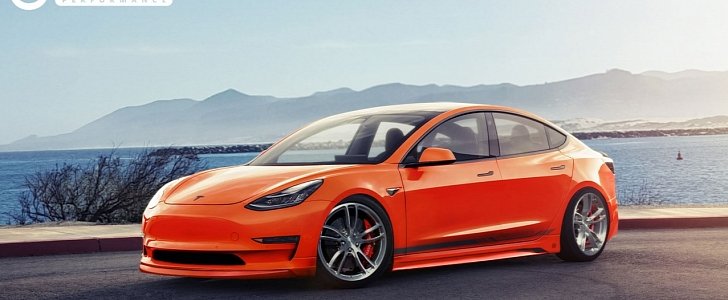With nearly half a million reservations already (or who knows how many?), the Model 3 looks set to become the world's best-selling EV in no time, provided Tesla finds a way to satisfy this crazy demand in adequate time.
But ever since this overwhelming reaction from the market, the Palo Alto company has been actively anti-selling its first mass-market vehicle, trying to convince as many people as possible to switch to the more expensive (but also large, more luxurious and with a longer range) Model S.
A glance through the Tesla dedicated forums and Facebook pages will tell you that this strategy has been somewhat successful, but the reason behind most people's decision had nothing to do with those three factors. Instead, they were just too anxious to own a Tesla that they decided not to wait over a year to get their Model 3.
Now, through a document released by the Environmental Protection Agency (via Teslarati), we find out that at least one of those reasons listed above is false as well. Upon its launch, Tesla said the standard Model 3 has a maximum range of 210 miles, while the long-range version gets an excellent 310 miles (500 km).
Those numbers were good enough to keep people interested in the new electric sedan (even though the 2017 Chevrolet Bolt did considerably better than the closely-priced base Model 3) while still some distance away from the more expensive Model S models.
With 335 miles of maximum range, the S 100D was the Tesla model with the longest range. The EPA paper puts the real-world performance of the Model 3 (with what's said to be an 80 kWh battery pack) at 334 miles, just one mile short of matching its bigger brother that's also twice as expensive.
The trick is that Tesla also under-reported the range of the Model S 100D, which is said to be 341 miles (548 km). Why would Tesla do that? Well, there could be two reasons: the first is maintaining a smaller gap between its models, particularly the performance-oriented P100D which, even though it has the same battery pack and number of motors, gets less mileage.
The second is that not all people drive the same. By leaving a little leeway there, the company is protecting itself from the wrath of customers who bought the car expecting to go 341 miles on one charge and managing less due to their driving style. Besides, it's not like there were any EVs out there that could do 335 miles or more.
A glance through the Tesla dedicated forums and Facebook pages will tell you that this strategy has been somewhat successful, but the reason behind most people's decision had nothing to do with those three factors. Instead, they were just too anxious to own a Tesla that they decided not to wait over a year to get their Model 3.
Now, through a document released by the Environmental Protection Agency (via Teslarati), we find out that at least one of those reasons listed above is false as well. Upon its launch, Tesla said the standard Model 3 has a maximum range of 210 miles, while the long-range version gets an excellent 310 miles (500 km).
Those numbers were good enough to keep people interested in the new electric sedan (even though the 2017 Chevrolet Bolt did considerably better than the closely-priced base Model 3) while still some distance away from the more expensive Model S models.
With 335 miles of maximum range, the S 100D was the Tesla model with the longest range. The EPA paper puts the real-world performance of the Model 3 (with what's said to be an 80 kWh battery pack) at 334 miles, just one mile short of matching its bigger brother that's also twice as expensive.
The trick is that Tesla also under-reported the range of the Model S 100D, which is said to be 341 miles (548 km). Why would Tesla do that? Well, there could be two reasons: the first is maintaining a smaller gap between its models, particularly the performance-oriented P100D which, even though it has the same battery pack and number of motors, gets less mileage.
The second is that not all people drive the same. By leaving a little leeway there, the company is protecting itself from the wrath of customers who bought the car expecting to go 341 miles on one charge and managing less due to their driving style. Besides, it's not like there were any EVs out there that could do 335 miles or more.

